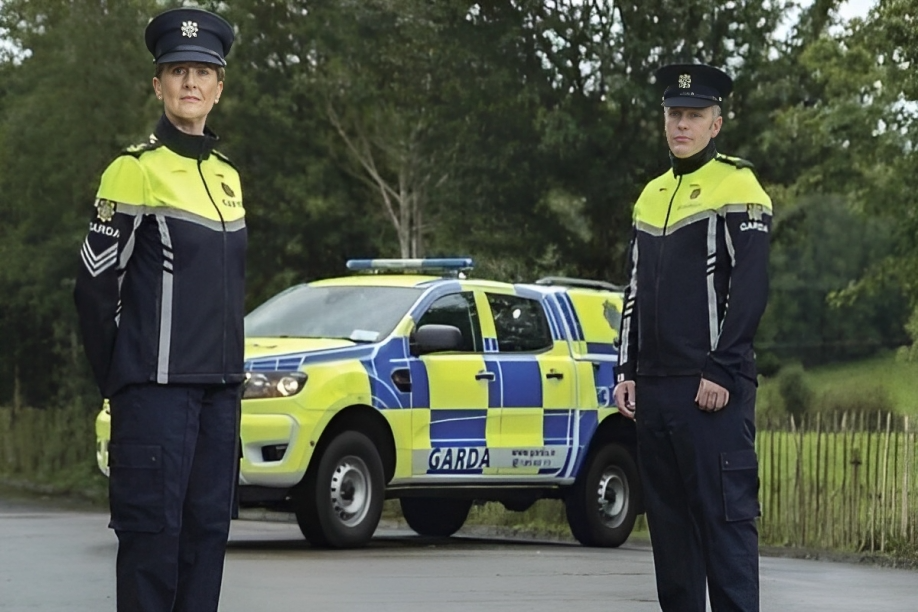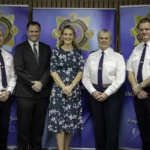An Garda Síochána Set to Roll-Out New Operating Model


An Garda Síochána is in the midst of a very exciting period of organisational change, the largest of its kind since its inception in 1922, as it rolls out a new operating model across the whole organisation.
The new operating model includes restructuring at national, regional, and divisional levels to enable improved delivery of community policing according to local needs. With increased specialist services and enhanced capabilities, it will allow An Garda Síochána to respond to changing communities and the changing nature of crime.
The operating model is a key initiative being delivered as part of the overall transformation programme for An Garda Síochána and is guided by the Government’s plan for policing – A Policing Service for the Future (APSFF). This will deliver upon the recommendations contained in the Commission on the Future of Policing in Ireland report.
An Garda Síochána is changing because it wants to ensure it continues to provide a high quality policing service to the people of Ireland, who trust in the organisation to help them feel safe in their homes, their communities and as they go about their daily lives.
A key structural change under the operating model is the organisation moving from six regions to four, and from 28 Garda divisions to 19.
Each division will be headed by a Divisional Chief Superintendent, who oversees four newly defined functional areas: business services; performance and assurance; crime; and community engagement. Each of these functional areas will be led by a superintendent, with the exception of business services, which will be led by an assistant principal officer.
Among the drivers of this change is a recognition that An Garda Síochána’s existing core structures have not fundamentally changed in its 100 year history.
It is also responding to changes in society as a whole. Our communities are more diverse and require a more tailored approach catering to their specific needs. An Garda Síochána, therefore, wants to organise and operate in a way that continues to work for Ireland now, and into the future.
The model now being rolled out responds to the diverse communities that exist today. It increases the importance of local and responsive policing. It places increased emphasis on our already close connection with local communities.
Crime too is changing, and this model recognises a need to stay ahead of criminals and how they have adapted over time. This includes enhancing An Garda Síochána’s capabilities in tackling cybercrime, economic crime, organised crime, domestic violence, and sexual crime at local level.
By having larger divisions, with more resources and more services available locally, we can provide better local and community policing with increased specialist services and enhanced capabilities.
An Garda Síochána began this transformation in October 2019 when it moved from six regions to four, and has seen divisions transition to the new functional area structure over time.
The Covid-19 pandemic delayed its implementation, but An Garda Síochána is now in the midst of rolling out the new functional areas and implementing the realignment of divisions. Mayo and Roscommon/Longford Garda divisions were the first to formally amalgamate in September 2022.
Six divisions – Kerry, Cork City, Galway, Limerick, Mayo/Roscommon/Longford, and the DMR South Central in Dublin – have implemented the four functional areas (business services, performance assurance, crime, and community engagement) under the new operating model. Work continues across the remaining 13 divisions to implement the operating model during 2023.
The rollout of the operating model is already benefiting communities and enabling greater efficiencies in delivery of services. For example, the operating model has enabled the establishment of regional cybercrime hubs, putting tools and specialists in place locally to investigate this form of criminal activity. Further to this, it has reduced the amount of time Gardaí spend on administrative tasks allowing them to spend more time on front line duties, increasing visibility on the ground.
Already, there are key points of learning from the transformation process, which may be of interest to other organisations going through similar change.
Inspector Sean Cullen says, “because this change is so big, we have found you have to be agile as to how you implement it. For instance, there are approximately 140 standardised business services processes (finance, HR, general administration) documented. It is only when people begin using the processes that you will get feedback to say this works, or there is a better way of doing this or that there are too many layers. When we get feedback, we make changes to standardised processes or our design where appropriate, as we are moving along.”
For An Garda Síochána there will always be new regulations or legislation that will require operational and/or administrative changes, so it needs to be able to adapt to these.
Cullen notes, “you have to have an integrated approach; you cannot be siloed. You have other change going on in the organisation too, like upgrades to our investigation management system, our computer aided dispatch system, implementation of the rosters and duty management system etc. And so, with all these other projects coming in you have to ensure you do not encounter change fatigue. We have found it is important not to implement too much change in divisions at any one time.”
All change must still go through the relevant policy owners for approvals, but as Cullen notes, it is not a one size fits all either. The divisions themselves have their own unique make-up, some are urban, some are rural, and others encompass up to three counties. For this reason, there needs to be a more tailored approach when implementing this change.
Mary Gildea, Assistant Principal over Business Services in the Mayo Roscommon Longford Division, says, “from my perspective the operating model has been very successful and innovative in its rollout throughout the division.”
“The model allows for the standardisation and optimisation of processes with the divisions so that if someone wishes to report a crime, have an event policed or look for specific documentation, the same process is applied across all divisions. It takes administrative tasks away from front-line Garda members and allows for them to exercise their specialities in policing and allows the business specialists deal with business matters.”
The real-world benefits of this ongoing transformation will be seen in the form of Gardaí being freed up to focus on the front-line, enhanced local policing and community engagement, and a wider range of services being provided locally.
It will not only improve organisational processes and operations to support community policing, it will help An Garda Síochána improve performance, and help it develop best practices at national and local level.
There will also be greater accountability throughout the organisation and regions and divisions will have greater control over how policing is delivered locally, while working within a corporate framework.
Source: Eolas Magazine






